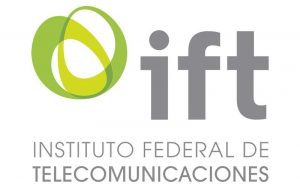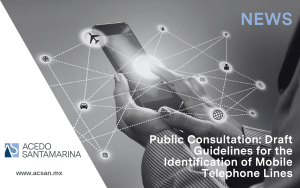
On October 28, 2019, the Guidelines for the delivery, registration and consultation of information for the conformation of the National Infrastructure Information System (the “SNII”), which were previously approved by the Plenary of the Federal Telecommunications Institute (the “Guidelines”), were published in the Official Gazette of the Federation.
The Federal Telecommunications Institute is responsible for the regulation, promotion and control of the use, development and exploitation of the radio electric spectrum, orbital resources, satellite services, networks and the provision of broadcasting and telecommunications services, as well as access to active and passive infrastructure and other essential machinery. By virtue of the foregoing, Article 181 of the Federal Telecommunications and Broadcasting Law already provided for the SNII as a geo-referenced national database containing information on active infrastructure and means of transmission, passive infrastructure and rights of way, and public and private sites.
The SNII was conceived in view of the existence of economic, administrative and operational barriers on the part of the concessionaires or authorized parties in their intentions for the deployment of telecommunications or broadcasting infrastructure; the costs of infrastructure installation, availability of space, processing of permits and rights of way, among other causes, hinder the deployment and efficient progress of telecommunications and broadcasting services.
As a result of the above, the SNII is created as a tool containing a geo-referenced national database that allows the visualization of active infrastructure records and means of transmission, passive infrastructure and rights of way and public sites, as well as their identification and information, location, characteristics, use and capacity. With a correct implementation and management of the SNII, it will create circumstances for a greater promotion of infrastructure sharing, allowing industry operators to reduce costs for the deployment and development of their networks through the sharing of infrastructure, resulting in the efficient use of the same and triggering better conditions for competition. This type of tool has been developed and implemented by regulators in other countries such as Portugal, Sweden and Germany, each with its own particularities but with the same objective.
The Guidelines define the information to be included in the SNII, as well as the formalities for its delivery, the terms and deadlines for its delivery, registration and consultation, which must be observed by licensees, authorized parties, security and law enforcement authorities, public institutions, universities, public research centers and individuals. The Guidelines entered into force on October 29, 2019 and as of the notice from the Federal Telecommunications Institute regarding the start of operations of the SNII, which will be published in the Official Gazette of the Federation, there will be a period of no more than 120 calendar days for the delivery of information.





